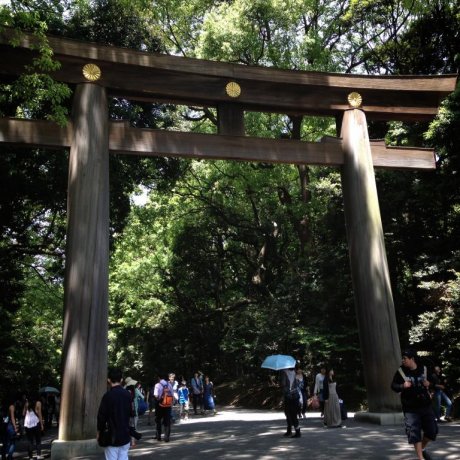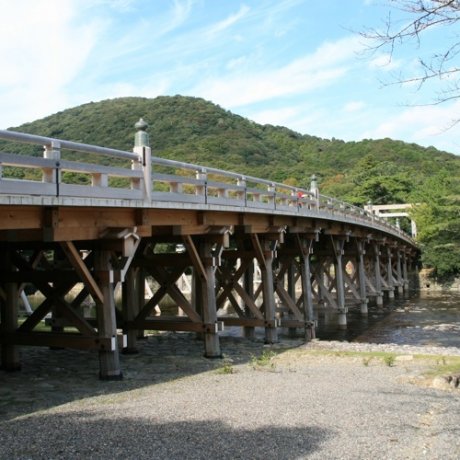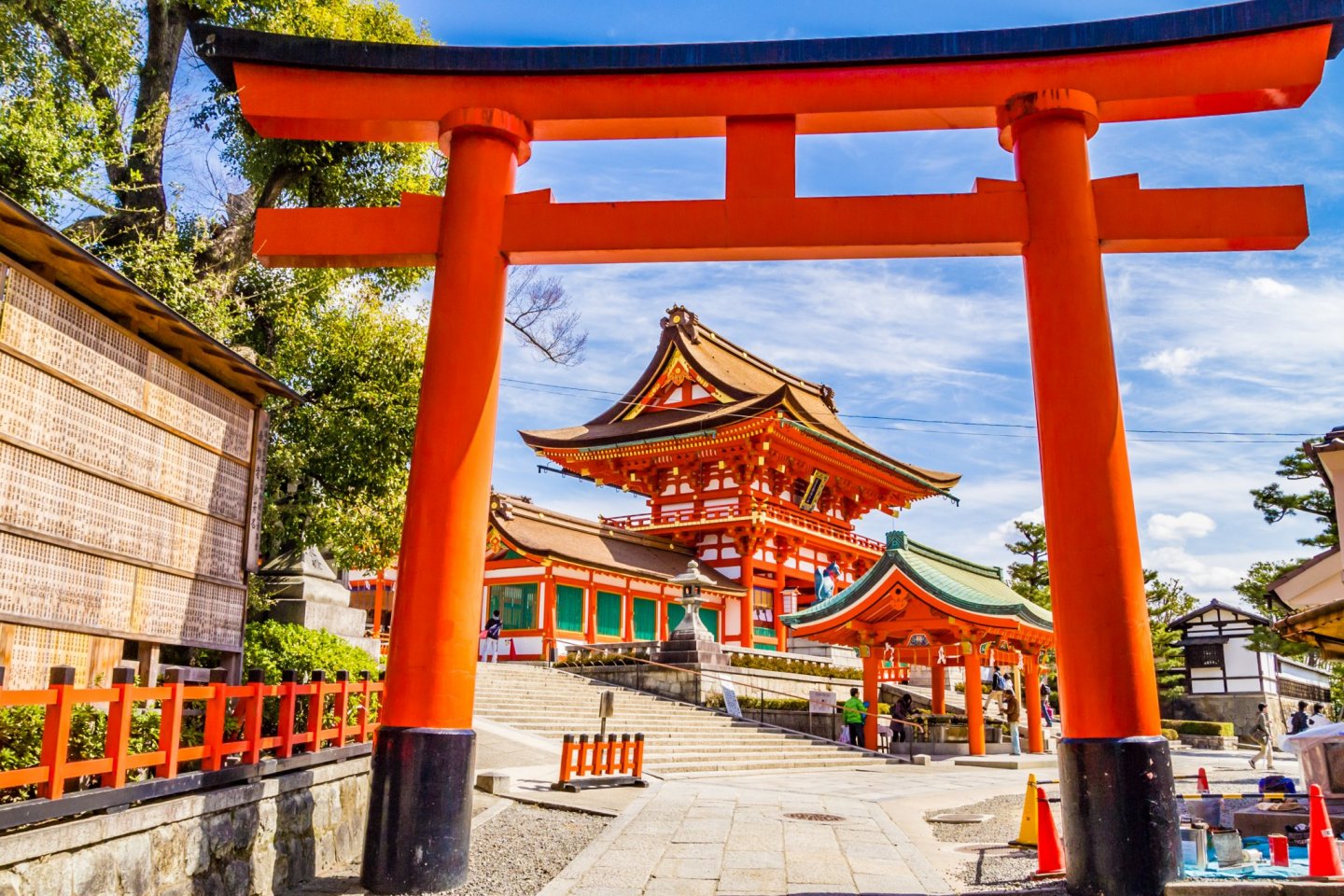What is a Shrine?
A shrine is a spiritual site related to Shintoism, Japan’s indigenous religion. Shrines normally house any number of gods, known as kami. These kami range from spirits of nature (wind, trees, mountains, etc.) to the spirits of deceased people who may have been influential during their lives (such as the numerous shrines dedicated to Japan’s emperors and shoguns).
Difference between Shrine and Temple
Shrines are marked by the presence of a torii, a tall entrance gate with crossbars that is placed on the boundaries of a shrine’s property. A temple is marked by a sloping house-like entrance gate, and often by the presence of a graveyard on the property.
Purification Rituals
Most visitors to a shrine will bow upon entering, being careful not to walk down the center of the path under the torii gate, as this is reserved for the god of the shrine only. The next stop for worshippers is at the temizuya or chozuya, a fountain or stone basin filled with water, where visitors purify themselves before prayer. Water from the fountain should be ladled out first into the left hand, then into the right. Water is once more added to the left hand and used to rinse out the mouth before any remaining water is carefully emptied over the ladle’s handle and the scoop is placed back for the next person to use.
How to Pray
Most prayers at a shrine are conducted in front of the honden, or main hall, where the kami resides. It’s customary to throw a coin in the offering box–five-yen coins are considered particularly fortunate, as the pronunciation of the coin’s name (go-en) has the same sound as a term for “luck”.
Sometimes, a bell hangs above the offering box. Use the attached rope to ring the bell and alert the kami to your presence. Clap twice (which also calls the kami), then bow twice, and offer up any desired petitions. When you finish praying, bow once more to complete the ritual.
Written petitions can also be offered to the gods and are inscribed on wooden tablets called ema. Once finished, these small plaques are often hung on a tree or large peg board near the main hall.
Amulets, Fortunes, Goshuin
Most shrines sell a variety of amulets, known as omamori. These charms protect the user from a variety of ills and bring the bearer good fortune–in test taking, in pregnancy, in driving, etc. Shrine visitors may also purchase an omikuji, or fortune. These fortunes are often written on strips of paper and can be either good or bad. If the your fortune is negative, it’s a common custom to tie the paper to a nearby tree branch or wire so the bad luck stays behind.
Many visitors enjoy collecting goshuin, or stamps, at each shrine they visit. A goshuin can be anything from a simply stamp to a hand-inked calligraphy message from a shrine priest. Goshuin are recorded in a special book called a go-shuincho, which can be purchased at a shrine itself or at a stationary store. Goshuin are sometimes done for free but at some shrines, expect to pay a fee of around 300 to 500 yen to receive the stamp.
Notable Shrines in Japan
Japan is home to innumerable shrines, from large religious complexes to small roadside sanctuaries. Some of the most notable for visitors are the Fushimi Inari Shrine in Kyoto’s southern Fushimi neighborhood; the Meiji Shrine–dedicated to the former-Emperor Meiji–in Tokyo’s Harajuku neighborhood; and the ancient Ise Shrine in Mie Prefecture.

My Visit to Fushimi Inari Shrine
Fushimi Inari Shrine is the perfect example of an Inari Shrine. The numerous red Japanese gates create a spectacular experience..

Meiji Shrine (Meiji Jingu)
Some interesting trivia, as well as a historical narrative of one of Japan's most celebrated shrines - Meiji Jingu, or Meiji..

The Grand Ise Jingu
The Grand Shrine of Ise comprises two separate shrines, the Naiku and Geku. From ancient times, worshippers would visit the Geku..






















